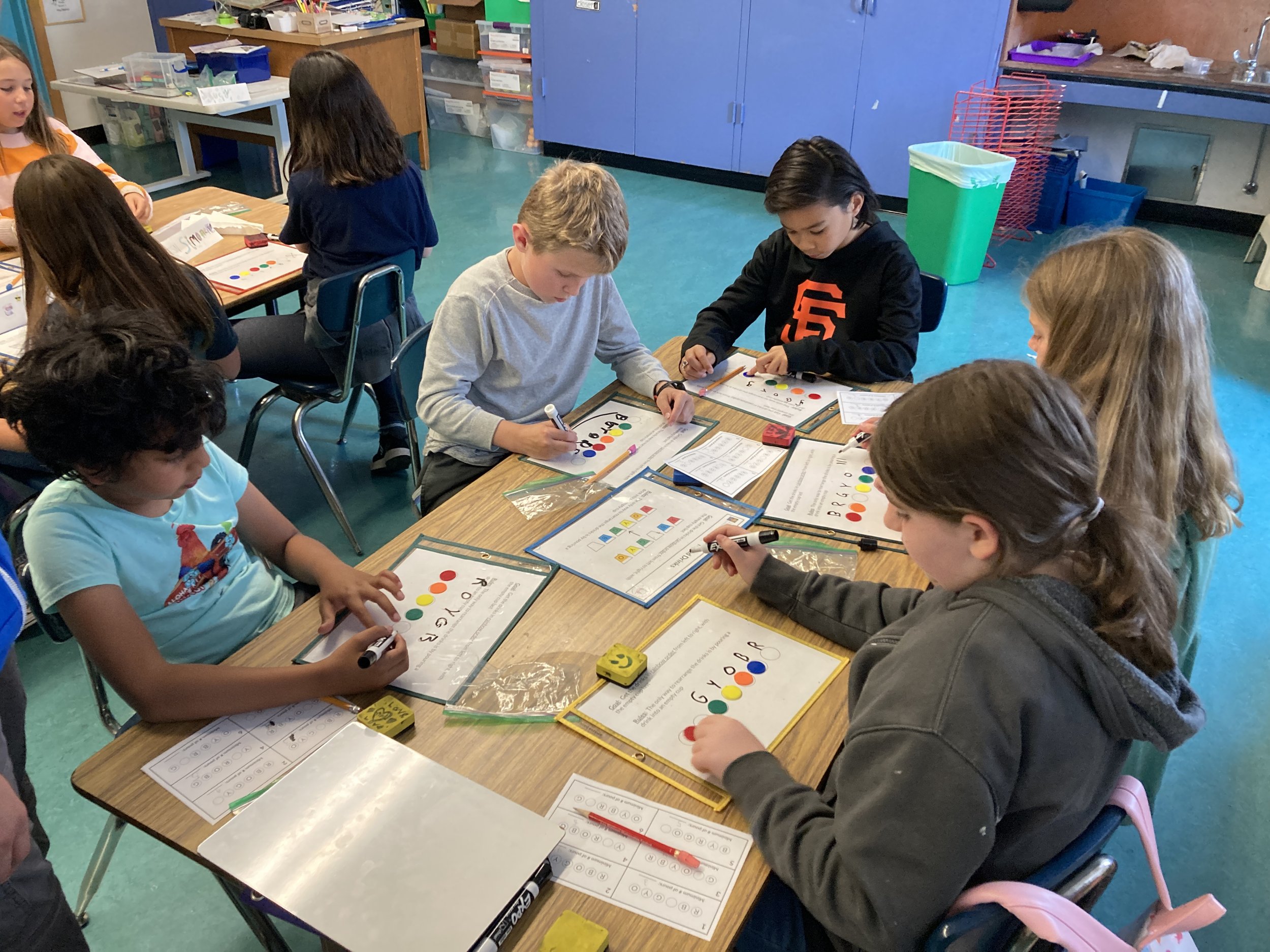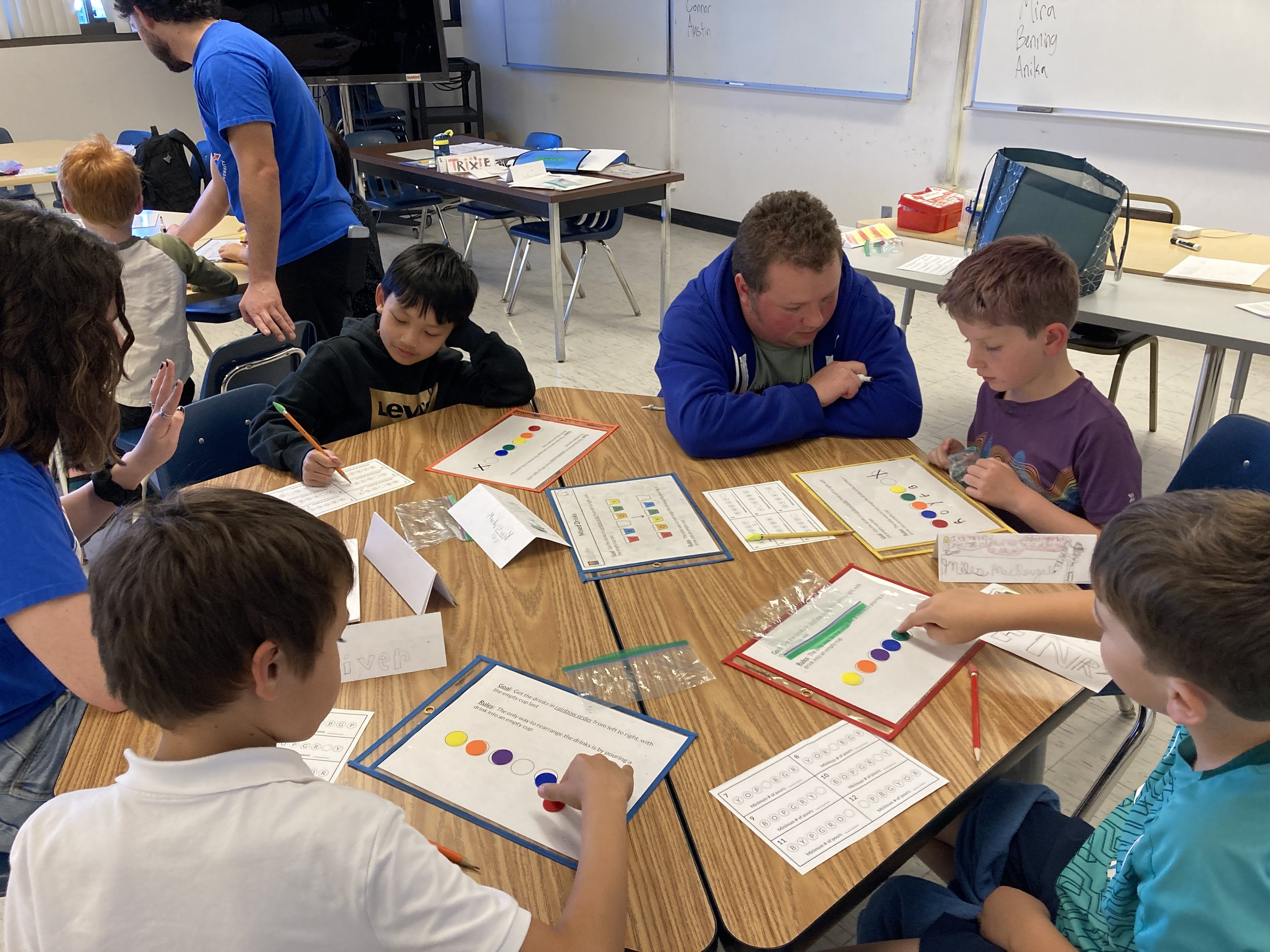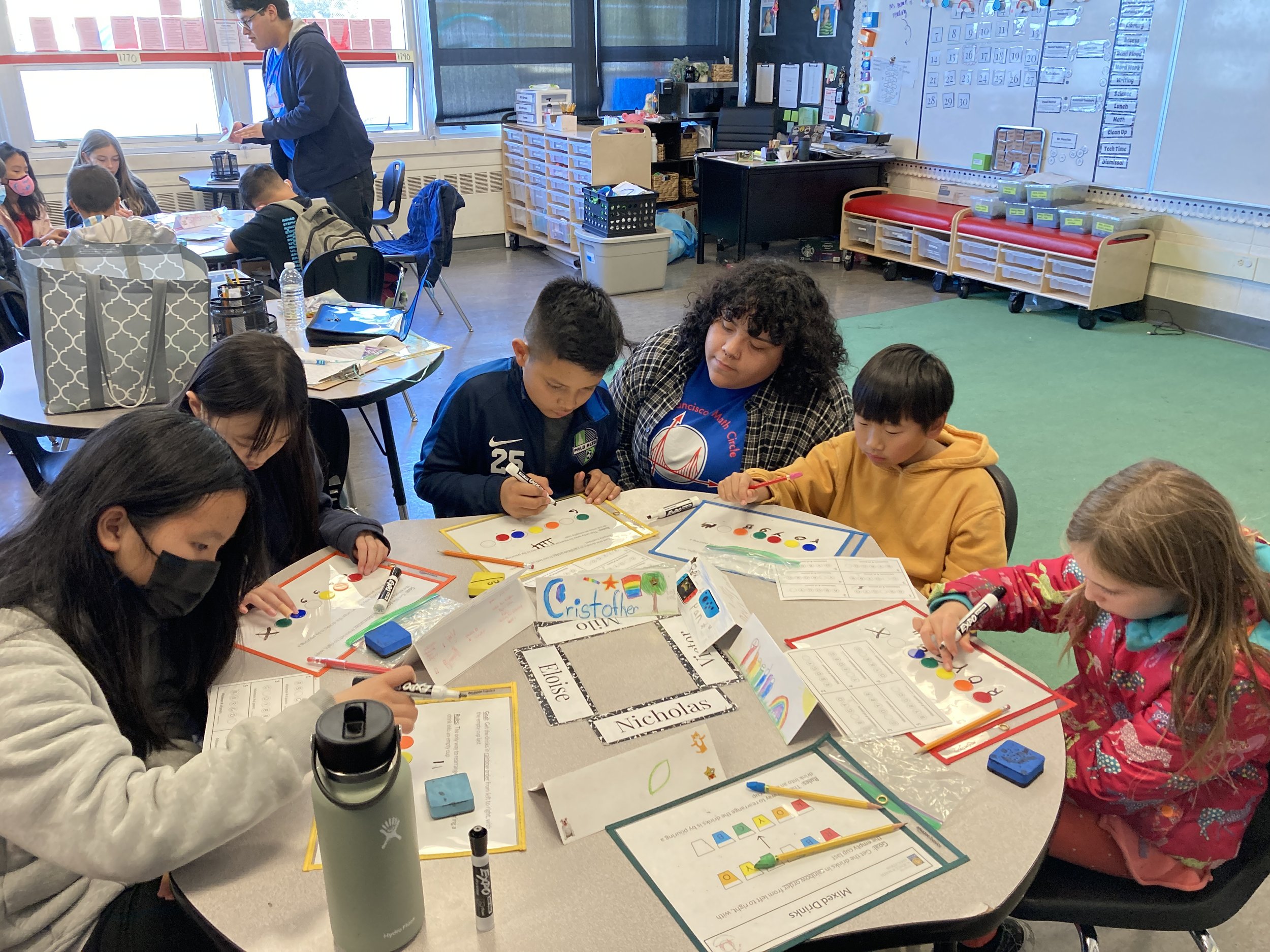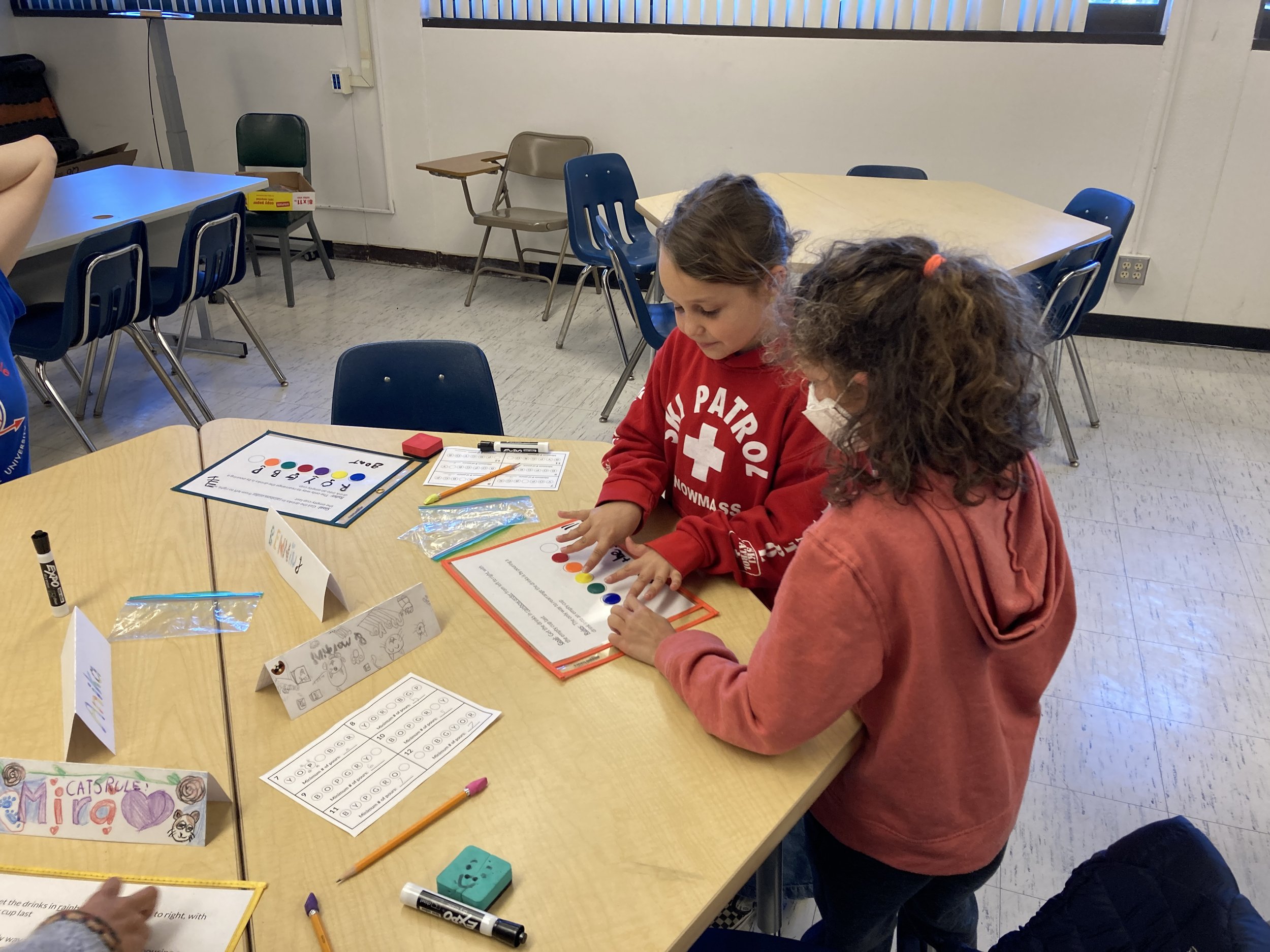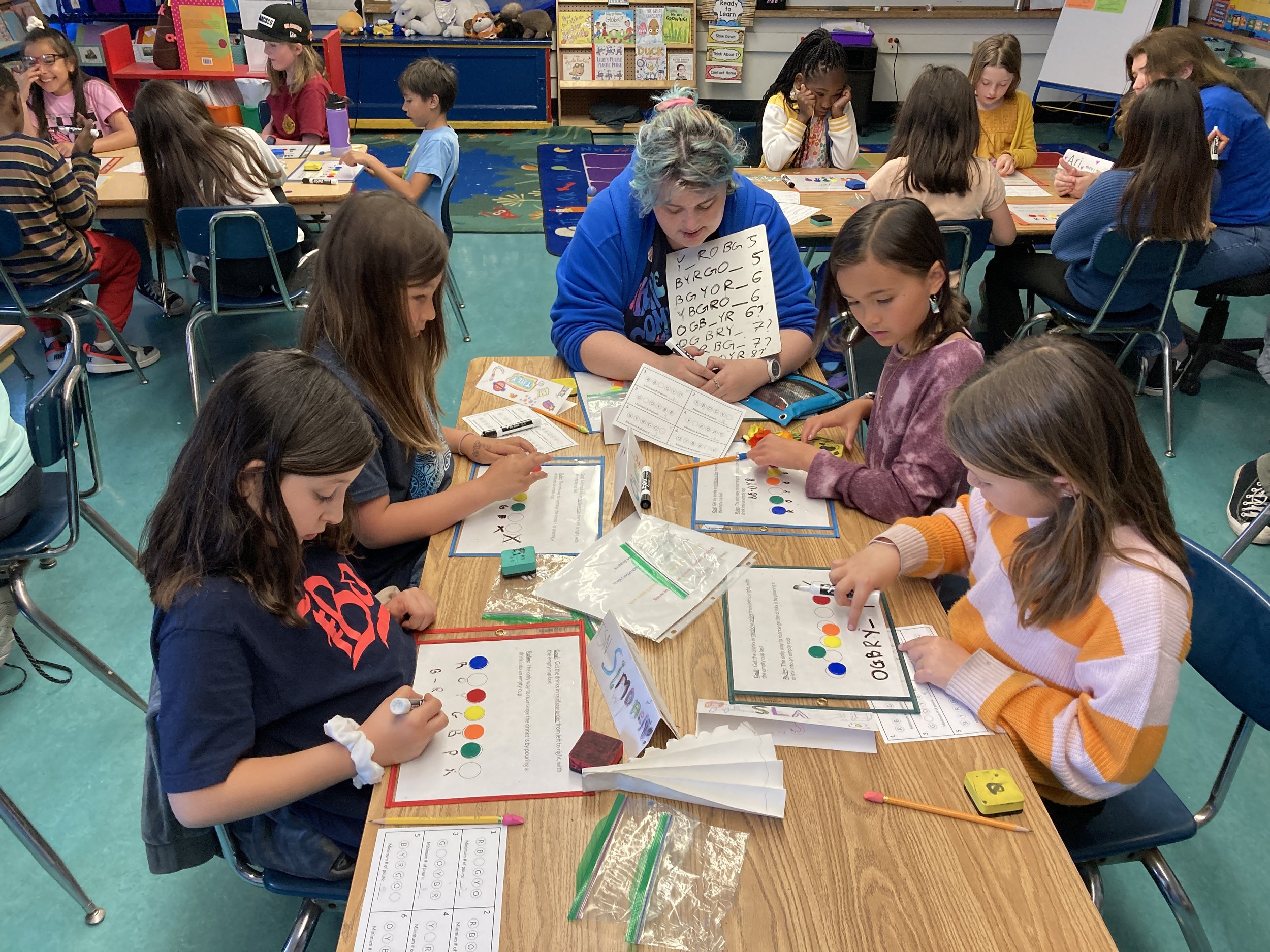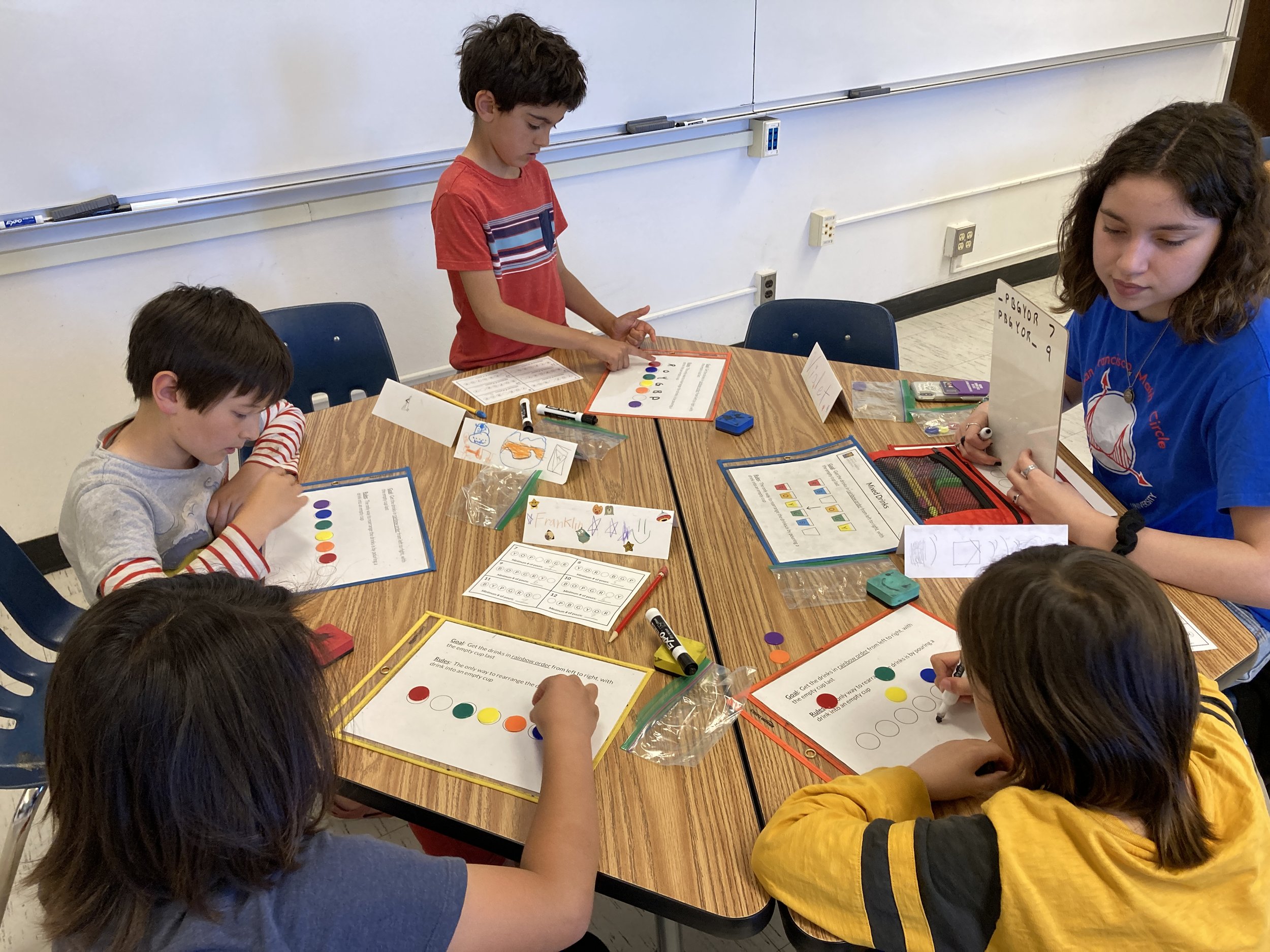Mixed Drinks
How it works
Imagine that you have 6 cups in a line. 5 of the 6 cups have drinks in them, and the drinks are different colors: red, orange, yellow, green, and blue. Initially, the drinks are in a random order, and your goal is to get it so that the drinks are in rainbow order (red, orange, yellow, green, blue), with the empty cup last. However, the only way you're allowed to rearrange the drinks is by pouring a drink into an empty cup. Will you be able to rearrange the drinks so they're in rainbow order? If so, what is the minimum number of pours you need to make?
In this activity, students first try to solve a variety of different puzzles with different starting arrangements for the drinks, always trying to make as few pours as possible. Then they work together to try to find the "hardest" puzzle — the puzzle that requires the most pours to solve. They also explore puzzles with 6 drinks and 7 cups.
Why we like this activity
It’s fun! Students enjoy trying to solve the puzzles and trying to find the hardest puzzle.
It helps students develop algorithmic reasoning.
It requires students to engage in mathematical habits of mind:
Finding and using strategies to solve the puzzles with as few pours as possible
Using logic and finding and using strategies to find puzzles that require as many pours as possible
It has a low floor and a high ceiling: Students can start solving puzzles by trial and error, but there's a lot to explore and discover about the number of pours required to solve different puzzles!
This activity was developed in collaboration with the Julia Robinson Mathematics Festival.


